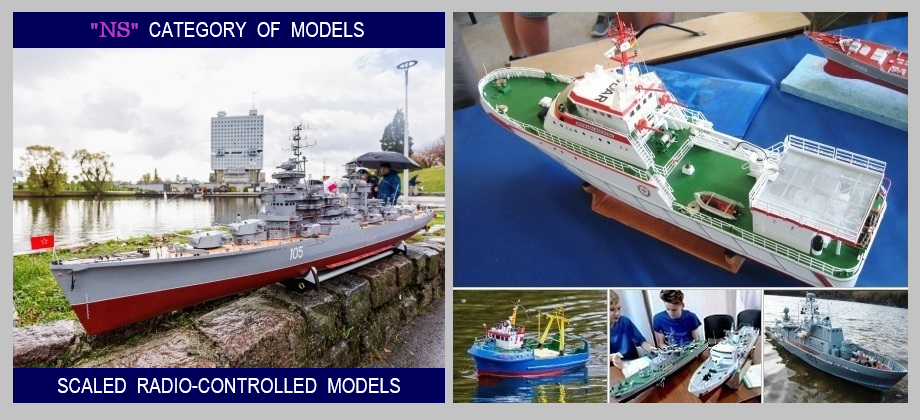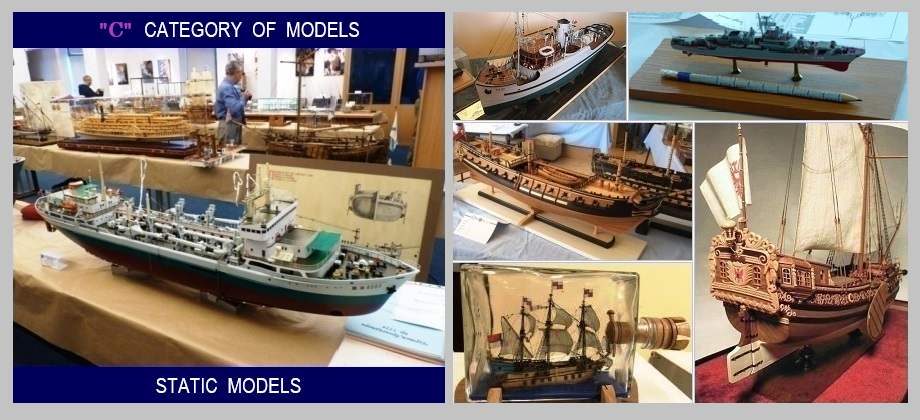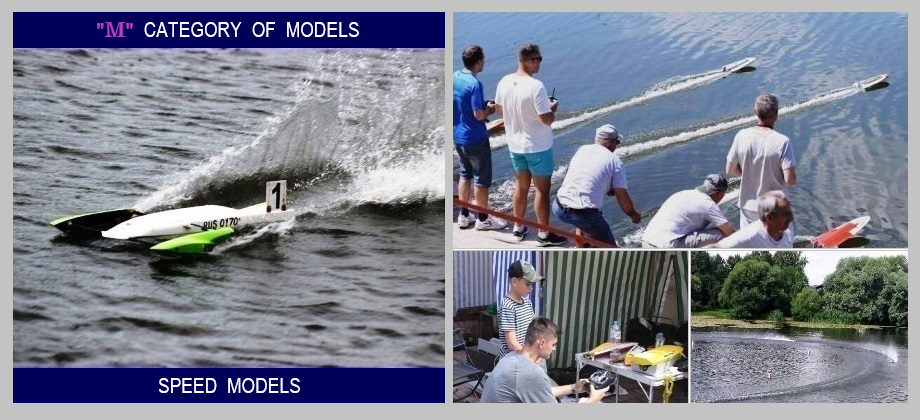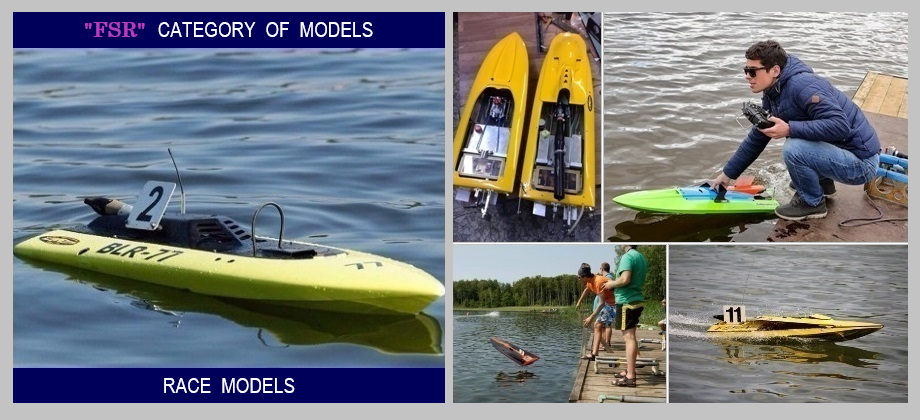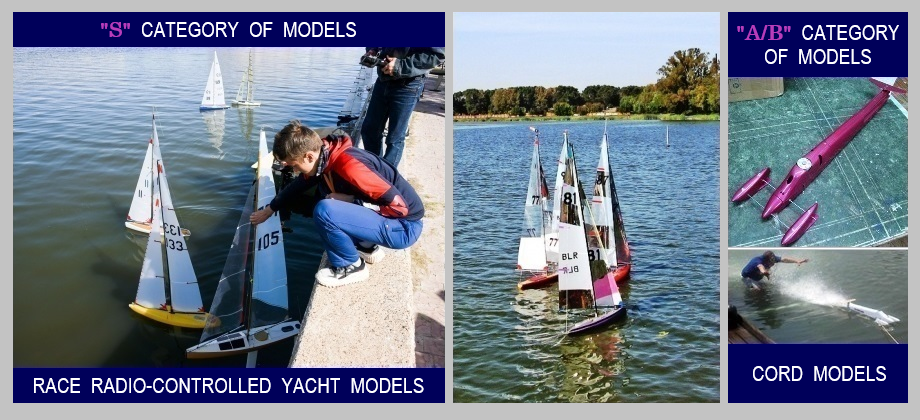► OUR MISSION IS UNITING PEOPLE TO ACTIVELY DEVELOP ALL AREAS OF SHIPMODELING SPORT TOGETHER !
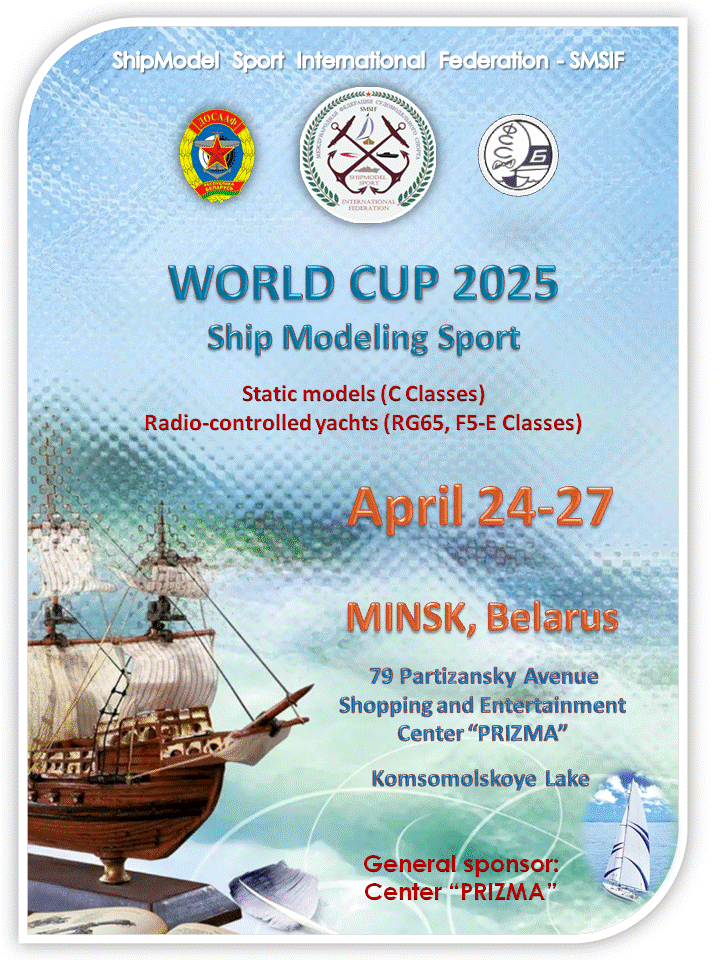
The World Cup among static models (C Category) and radio-controlled yachts (RG65 and F5-E) ended on 27 April 2025 in Minsk (Belarus). The competition was held at 2 locations, the static models were showcased in “PRIZMA” shopping mall while the yachts raced at Komsomolskoye Lake. In total, 144 people (including judges) from 8 countries participated in the Cup, with competitors from Belarus, Russia, Uzbekistan, Kazakhstan, Turkey, Georgia, Lithuania and Germany. As for the models, there were 219 of them in different classes, 151 static and 68 – radio-controlled ones…
► “Minskaya Vesna-2025” World Cup – Competition protocol
► Video: World Cup-2025 Opening Ceremony
► Video: starts among radio-controlled yachts
► Internet about the World Cup-2025: 1 | 2 | 3 , etc.
All the C category classes were presented for the static evaluation. The toughest competition was among С-6А Class (plastic kit models), С-7А (paper and cardboard models), С-8А and С-8В (models from combined kits). However, even some less “populated” classes had several very impressive works.
The best models in C-1 Class (sailing ships) were found to be two models by Minsk-native Sergey Upolnikov, the first being “Witsen” pinas ship and another - a Dutch fluyt, both meticulously built in 1:100 scale.
“Soznatelniy” destroyer by Nikolay Rumyantsev (Russia) came top with a gold medal in its C-2 Class, quite as expected. The model was unequalled as concerned its prototype complexity, detail finery and consequently, the scope of work required.
It is worth paying particular attention to C-3B Class (cross-sections and admiralty models) which comprised 6 (!) models at once, all model hulls of exceptional complexity, labour intensity and considerable size. These models were a real zest of the static exposition and drew admiration both from numerous spectators and experienced shipbuilders. All the six models won high grades –the average gap between their lowest and highest scores was only 2.33 points. The best among them eventually turned out to be “Le Soleil Royal” battleship (end of XVII century), richly decorated with elaborate carvings. The model belongs to Sergey Zenkin (Russia). Other two models were running neck to neck, both historic frigates - “La Renommee” (Andrey Krachko) and "HMS Najad" (Vitaliy Makhorskiy) which received only 0.67 points less than “Le Soleil Royal” battleship. These two models were executed in an especially neat and high-quality fashion, with carefully chosen types of wood. Just to mention - 5 models from C-3B Class were awarded with gold medals at the competition! And little wonder, since unlike metal and plastic, wood is unforgiving when it comes to mistakes and will not yield to puttying and re-painting…
C-5 Class is often considered as quite exotic as it comprises models in bottles. The World Cup-2025 saw 5 such models, from Uzbekistan and Russia. Just to say that the Uzbek models were well-made is to say nothing. First, the bottles were filled with the ships as much as it was possible. The mounting technology was also extremely complex – the hulls consisted of 4 parts and were assembled inside the bottle, and only then the modeler would mount deck equipment, rigging, sails and cordage. In this class, the top score (97.33 points) and a gold medal were awarded to Christopher Columbus’ Santa Maria“ flagship from Marat Khakimzanov (Uzbekistan).
The sports competition was especially serious in С-6А Class, which is quite popular among modelers and comprises plastic kit models, scale up to 1:500. Here, 28 models were presented ranging in execution and complexity levels. But only 5 of those were awarded with gold:
- “Kongo” battleship by Oleg Khotko (Belarus);
- “Varyag” cruiser by Sergey Kostyuk (Russia);
- “North Caroline” battleship by Alexey Kalmykov (Belarus);
- “Moskva” missile cruiser by Elena Zhornik (Russia);
- “Koreets” gunboat by Sergey Kostyuk (Russia).
Incidentally, the “Kongo” battleship model, performed in a very challenging 1:350 scale and equipped with a planked deck, received the top score at the World Cup – 100 points! Another model, “Varyag” cruiser, won the jury’s hearts with its extensive work at rigging and cordage.
Another battleship, “Bismark” executed by Belorussian modeler Valentin Karengin, came first in С-6В Class (plastic models, scale under 1:500). As for С-6С Class (model series and plastic kit dioramas), here Ignat Yaroshenko (Belarus) presented his work which was considered the best – a development range of WWII submarines. Ignat managed to master such capricious material as cardboard as well. His “Admiral Hipper” cruiser model was a leader among С-7А Class models (paper kits in scale up to 1:250).
As for С-8А Class (sailing ship models from combined kits), over a dozen models were competing at the World Cup, for some it was the “maiden voyage.” One the Cup debutantes, Andrey Samarev (Belarus) has every right to enjoy his hard-won victory in this class. His “Merkurii” brig certainly stood out thanks to its fine details, sails and cordage. Alexey Busel (Belarus) with his “Polotsk” schooner came only 0.33 points behind; this model was actually first at the Championship of Russia 2024.
The only gold winner in С-8В Class (industrial kit models of ships with mechanical propulsion) was a model of “Kerch” large anti-sub marine ship (Oleg Khotko, Belarus), impeccably executed in scale 1:700.
The organizer could not have chosen a better venue for the static exposition as “PRIZMA” shopping mall has convenient logistic facilities, free parking, food court and a steady stream of visitors.
As for the radio-controlled yachts, their starts took three days to complete. The weather did not quite favour the modelers since it was both fairly cold and windy. But the moderate wind made sure that the races were dynamic, captivating and even intriguing – their participants were top racers from Minsk, Saint Petersburg and Moscow. The level of the competition remained high during the races due to a large number of competitors in these classes. However, Dmitriy Koipish (Belarus) came top in several races (from 7 in total) and thus won a gold medal in the comparatively new RG65 Class (27 participants).
F5-E Class turned out to be even better “populated” – 41 participants altogether, so they had to be split into three groups. First, the competition took place inside the groups. Then, the best modelers competed among themselves in the final races to see who was best at navigating the yachts. After a two-day race, Dmitriy Tatarkin (Russia) became the winner in F5-E Class.
The World Cup ended with the closing and awards ceremony on 27 April at 6 pm. In the team competition, “Belarus” team was awarded with gold, “Petrograd” (from Saint Petersburg, Russia) came second and DOSAAF Water Sports School (Minsk, Belarus) - third.
“Minskaya Vesna-2025” World Shipmodeling Cup became a perfect place to see truly unique models from renowned modelers and also gave ship modeling sport enthusiasts an opportunity to discover for themselves new names as well as fascinating models. At the weekend, dozens of city guests and locals visited our static exposition in “PRIZMA” shopping mall. And even for the most experienced and eminent master, the best reward possible still remains seeing genuine sparks of interest and admiration in the spectators’ eyes.
SMSIF ShipModel Sport International Federation thanks people and companies who have helped to prepare “Minskaya Vesna-2025” World Cup. Among them are DOSAAF Central Council, “PRIZMA” shopping mall for being the general sponsor of the competition, “Milania” (“Master-Korabel” TM) Russian enterprise for providing the competition with sports prizes and also all the administration, coaches and leading sportsmen from DOSAAF Water Sports School (Minsk, Belarus).
https://shipmodelsport.org/eng/index.php/89-world-cup-2025-competition-results#sigFreeId6afb121e65
